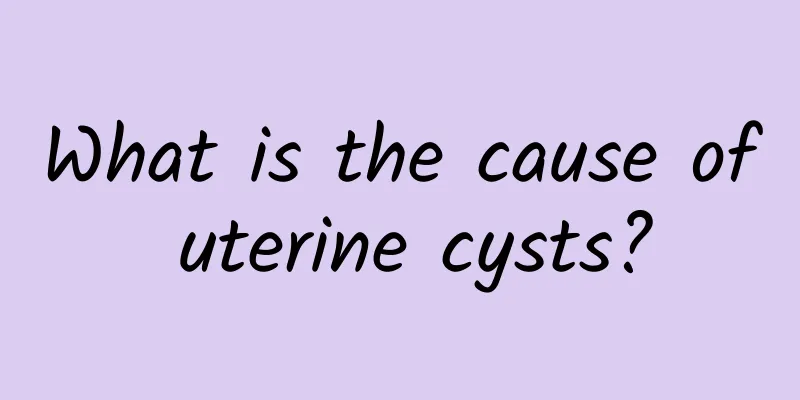How to self-check ovulation bleeding

|
Many people who are preparing for pregnancy know how to calculate the pregnancy period, but sometimes they find that they still have their period even though they are clearly in the ovulation period. Is this their period or something else? Today, I will tell you in detail how to self-check for ovulation bleeding. How to tell if it is menstrual bleeding or ovulation bleeding? First of all, we need to understand what ovulation bleeding is. In the middle of the menstrual cycle, that is, the ovulation period, due to a temporary drop in estrogen levels, the endometrium loses hormonal support and part of the endometrium falls off, causing regular vaginal bleeding, which is called ovulation bleeding. Traditional Chinese medicine calls it "intermenstrual bleeding". However, many women are not so keen on noticing bleeding during or even before and after menstruation. In fact, women usually ovulate about 14 days before the next menstrual period. To be on the safe side, we call the 5 days before and 4 days after ovulation, together with the ovulation day, a total of 10 days, the ovulation period. The rest of the time except the menstrual period is called the safe period. The duration of visible vaginal bleeding can be several hours, or 3 to 5 days, but rarely more than 7 days. In severe cases, it may continue until the next menstrual period. Some people bleed in very little amount, which stops with a few drops, or there is blood in the vagina. Generally, it rarely reaches the amount of menstruation. Bleeding may be accompanied by bloating and discomfort in the lower abdomen on one side, or dull pain or obvious pain, and even involve the waist and inner thigh. Symptoms may occur continuously every month or once every other month. Some people experience it for several months a year, and some people only experience this phenomenon once in their lifetime. Why does ovulation bleeding occur? In fact, every woman who is preparing for pregnancy may experience ovulation bleeding. Generally speaking, the amount of bleeding is very small and cannot be observed with the naked eye. However, some people will have obvious bleeding symptoms, and the severity cannot be generalized. Possible causes are as follows: 1. Excessive fluctuations in hormone levels. After ovulation, estrogen levels drop rapidly, causing the endometrium, which is proliferating under the influence of estrogen, to lose support and cause a little bleeding. 2. Chronic inflammation of the endometrium. This causes the endometrium to become congested during ovulation, or when ovulation occurs, blood vessels on the surface of the ovary rupture, causing more bleeding than normal and flowing back into the uterine cavity with the peristalsis of the fallopian tubes, and then discharged from the body through the vagina. |
<<: What are the dangers of endometriosis?
>>: Women should be alert to the dangers of candidal vaginitis
Recommend
What syndromes may occur after abortion?
Abortion is a remedial measure after contraceptiv...
Diet adjustment can help you get rid of menopausal troubles
Menopause is an inevitable stage in life. No matt...
Are the elderly obese and unable to walk? 3 secrets to lose weight easily and regain your motivation
To live, you have to move. Elderly people are oft...
Where is the best hospital for pelvic peritonitis?
In the treatment of pelvic peritonitis, many pati...
Can pelvic inflammatory disease be treated?
Can pelvic inflammatory disease be treated? Chron...
Do I need to go to the hospital for a spontaneous abortion?
Spontaneous abortion is something that every moth...
Can patients with chronic pelvic inflammatory disease enjoy sexual life?
Pelvic inflammatory disease is a disease that aff...
Orange peel is not afraid of being exposed to the light! Try these 3 yoga moves
In the hot summer, many women want to wear sexy b...
Menstruation is late, back pain, breast pain
Menstruation is late, back pain, breast pain: Del...
What causes poor ovarian function?
Ovarian dysfunction has a special impact on women...
What are the common symptoms of pelvic inflammatory disease?
Acute pelvic inflammatory disease is more common ...
The main symptoms of hydatidiform mole
The main symptoms of hydatidiform mole include ab...
Can pregnant women with Bartholinitis be transmitted to the fetus?
Can pregnant women with Bartholinitis transmit it...
What are the key points for preventing cervical erosion?
What are the key points for preventing cervical e...
How to diagnose congenital absence of vagina?
How to diagnose congenital absence of vagina? Thi...









